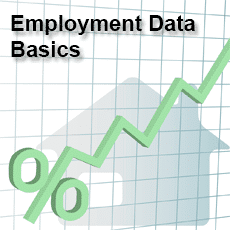 As the number of jobs available to Americans rises and the employment rate consequently increases faster than expected, mortgage rates tend to increase with it. The reason for this is fairly straightforward, and is explained below. However, there are circumstances where this relationship can be changed, according to how the government and Federal Reserve view the economy and the affordability of home ownership to ordinary people.
As the number of jobs available to Americans rises and the employment rate consequently increases faster than expected, mortgage rates tend to increase with it. The reason for this is fairly straightforward, and is explained below. However, there are circumstances where this relationship can be changed, according to how the government and Federal Reserve view the economy and the affordability of home ownership to ordinary people.
Employment and Mortgage Rates
Jobs data normally affect the mortgage rate, or the bank interest rate in general, in a fairly simple fashion, connected with the relative availability of income and taxation revenue. Usually:
• Increasing employment leads to increasing taxation revenue.
• Increased income and taxation revenue leads to increased consumer and government spending.
• Overall spending increases lead to more demand for goods and services, and hence further employment.
• Steadily increasing employment leads to more demand for housing.
• Increasing demand for housing leads to higher mortgage interest rates.
Generally, an increased demand for finance or US dollars will result in an increase in interest rates. However, this is not a direct relationship, and neither is it necessarily a given sequence of events. This is because of quantitative easing, or the Federal Reserve’s QE3 program that helps to maintain lower mortgage rates.
Quantitative Easing
The Federal Reserve is mandated by the government both to maximize employment and to contain the rate of inflation. Generally, increased employment and hence disposable income leads to more demand for consumer goods and housing, and hence higher prices and interest rates that tend to drive up the rate of inflation.
The two requirements are therefore mutually exclusive, although there is a way to keep inflation and interest rates low while still improving employment and jobs data. Because of its success in controlling inflation, the Federal Reserve uses quantitative easing (QE) to inject more cash into the economy.
By injecting cash, there is less of a demand for US dollars, and hence interest rates are not necessarily affected by the increase in employment and in consumer spending. This is a simplistic viewpoint, but is fundamentally how the relationships between employment, money supply and mortgage rates can vary according to government and Fed intervention.
This is a fairly common strategy that has been also been used recently by the Bank of England in the UK for the same reason. QE can be an inflationary strategy, but its main effect is to drive down interest rates, or at least help maintain interest rates in a period of increasing employment. Rather than allow interest rates to rise, cash is injected into the economy.
By purchasing mortgage-backed securities, the Fed can reduce the cost of mortgages – in other words, interest rates effectively fall. So if the employment rate increases, and more jobs come on the market, the effect of this is usually a drop in mortgage rates and it becomes cheaper for you to buy real estate.
Still have questions? We can help. Please call us directly or request a fast rate quote to get a free consultation regarding any questions you might have.



About The Author: Kenneth Le
More posts by Kenneth Le